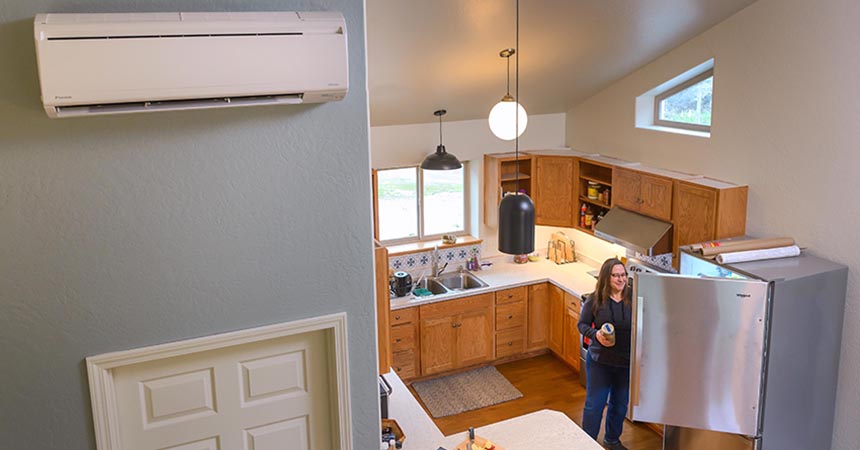
The Inflation Reduction Act is expected to help millions of Americans benefit from energy efficiency and renewable energy. But exactly when and how a lot of those benefits will be rolled out is still unclear.
Because of how the legislation was passed, there are a lot of details that still need to be determined, including rebate and tax credit amounts and the specific equipment that will be covered.
Plus, as the largest U.S. investment in climate and clean energy, it’s going to take time for all that money to reach customers and communities, and some programs aren’t expected to roll out until 2024.
Running the numbers
All this can be especially confusing for people trying to decide whether to move ahead with an energy-efficiency project now or delay in the hopes of qualifying for a new rebate or tax credit.
There are two types of benefits that will be available under the IRA: federal rebates and federal tax credits. Some of these tax credits are available now, while others will become available Jan. 1, 2023.
Energy Trust offers cash incentives for some of the same upgrades, meaning customers could combine, say, an IRA rebate for a heat pump with an Energy Trust heat pump incentive to save even more. (While upgrades covered by the IRA are mostly for electric efficiency, Energy Trust also offers incentives for efficient gas equipment.)
Here are some of the rebates and tax credits we know are coming (Energy Trust incentive levels may change in 2023):
| ITEM | FEDERAL REBATE | FEDERAL TAX CREDIT | 2022 ENERGY TRUST INCENTIVE |
|---|---|---|---|
| Insulation | Up to $1,600 starting sometime in 2023 or 2024 | Up to $1,200 starting Jan. 1, 2023 | $0.30-$1.25 per square foot depending on eligibility |
| Heat pump | Up to $8,000 starting sometime in 2023 or 2024 | Up to $2,000 starting Jan. 1, 2023 | $250-$1,650 depending on eligibility |
| Windows | No | Up to $600 starting Jan. 1, 2023 | $1.75-$6 per square foot depending on eligibility |
| Heat pump water heater | $1,750 starting sometime in 2023 or 2024 | Up to $2,000 starting Jan. 1, 2023 | $500 |
Source: Rewiring America and ENERGY STAR
If you decide to hold off on a project, be prepared to wait well into the new year. Experts warn customers could run into delays given the equipment and labor shortages we’re already seeing, coupled with the spike in demand that’s expected once these offers start to roll out.
What else is in the law
While there is a lot we don’t know about the IRA, what we do know so far is promising.
First, the law provides immediate support for people installing solar energy systems and battery storage. It increased the federal solar tax credit from 26% to 30% retroactive this year until 2032 and clarified battery storage is eligible for the 30% tax credit.
Second, the law prioritizes support for households with low and moderate incomes, including covering up to 100% of energy-efficient appliances. That includes heat pumps, which are up to five times more efficient than traditional heating systems and also provide cooling in hotter months.
Elsewhere in the law is money to train contractors to install energy-efficiency upgrades and grants that support local environmental and climate justice projects like air pollution monitoring, extreme heat risk mitigation, resiliency and adaptation, according to an analysis by the Bipartisan Policy Center.
The bottom line: It’s a giant piece of legislation, and it will take time to have an impact – but that impact will be transformative, according to that group.
“Clean energy provisions (will) accelerate the deployment of clean energy technologies, reduce global emissions, lower energy prices, help export American innovation, strengthen our economy and build a reliable and affordable energy sector,” it writes.
